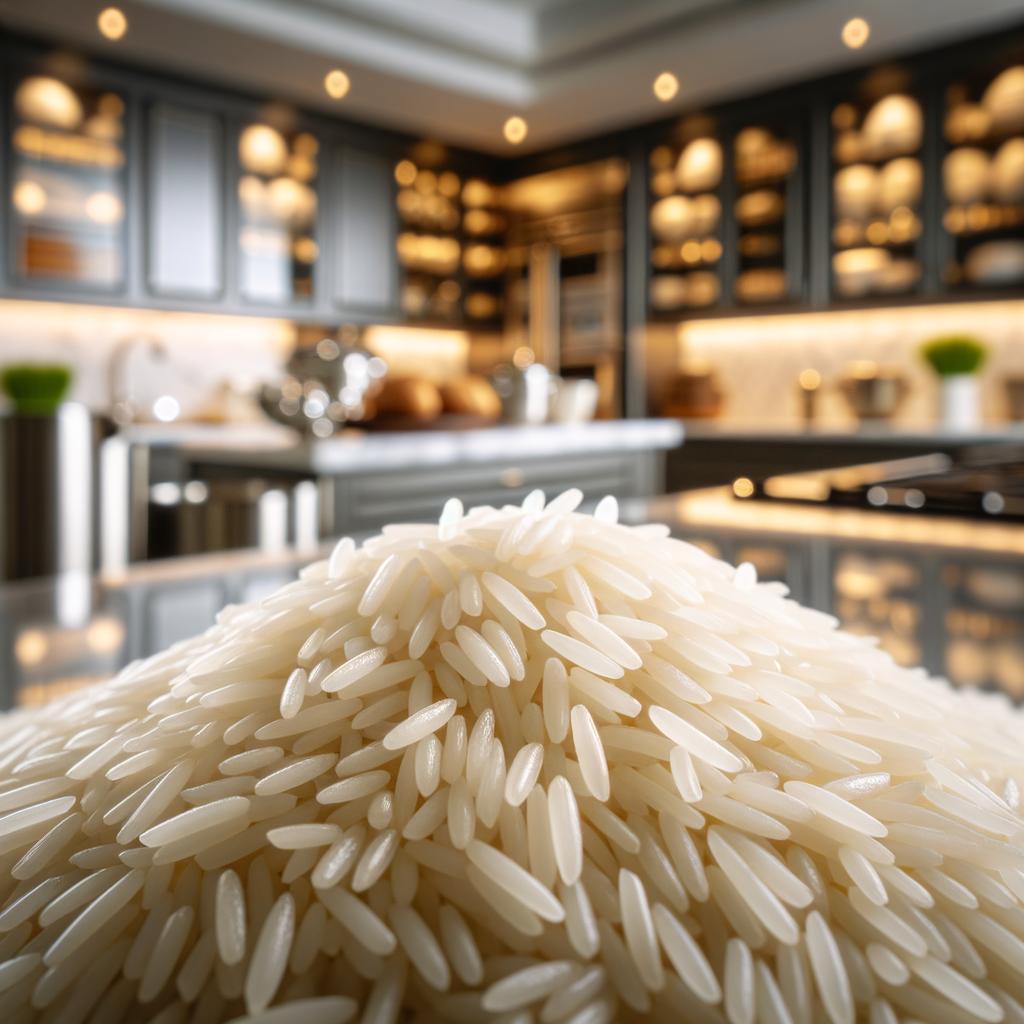Cooked Jasmine Rice

Description
Jasmine rice, also known as Thai fragrant rice, is a long-grain variety of rice that has a sweet aroma and a delicate, yet slightly sticky, texture. The grains are opalescent and slim, blooming into a beautiful, fluffy consistency upon cooking. This rice is known for its signature jasmine scent, which is a result of the natural compound 2-acetyl-1-pyrroline. This unique fragrance sets it apart from other rice varieties and makes it a culinary delight.
Primary Uses
Jasmine rice is a staple in Southeast Asian cuisine, particularly Thai food. It is commonly used as a side dish for stir-fries, curries, and grilled meats. Its mildly sweet flavor and pleasing aroma make it an ideal component for desserts like mango sticky rice. In addition, jasmine rice is often used in fried rice dishes, where its slightly sticky texture helps hold the dish together. Beyond its culinary uses, jasmine rice is also known to have cultural significance in many Asian countries, where it is used in religious ceremonies and rituals.
History
Jasmine rice traces its roots back to Thailand, where it has been cultivated for centuries. The name 'jasmine' refers to the color of the rice, which is reminiscent of the color of jasmine flowers. Historically, it was served only to royalty in Thailand because of its superior flavor and quality. Over time, its popularity spread throughout the world, and it is now a beloved ingredient in kitchens globally. An interesting folklore attached to jasmine rice is the Thai belief that the rice contains a 'dewdrop heart', symbolizing its precious and delicate nature.
Nutritional Information
Jasmine rice is a good source of energy due to its high carbohydrate content. It also provides essential nutrients, including iron, niacin, and thiamine. While it has less fiber compared to brown rice, it is easier to digest, making it a good option for those with sensitive stomachs. Consuming jasmine rice can provide quick energy and also help in regulating various body functions due to its vitamin B content. However, like all white rice, it has a high glycemic index, which means it can raise blood sugar levels quickly. Therefore, it should be consumed in moderation, especially by those monitoring their blood sugar levels. Despite this, its unique flavor, enticing aroma, and rich cultural history make it a cherished ingredient in many culinary traditions.

